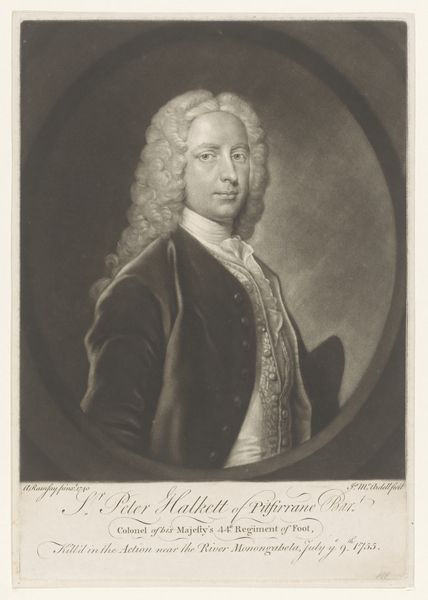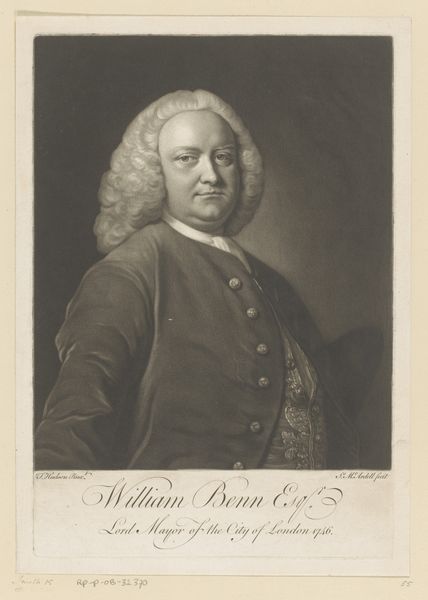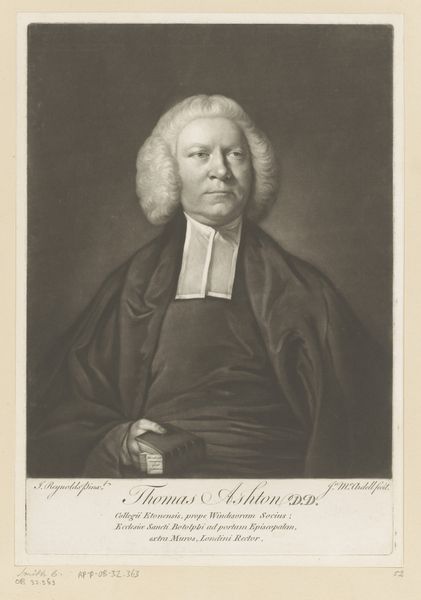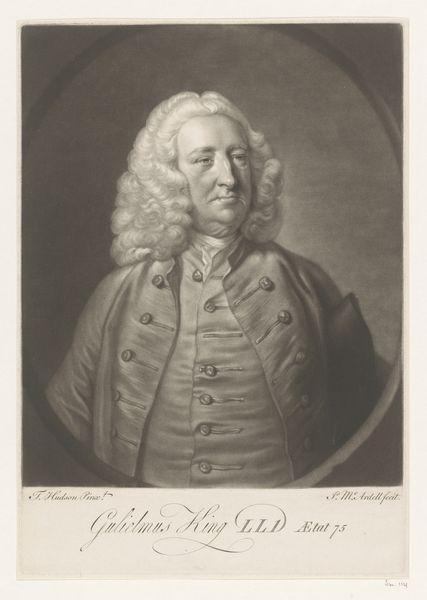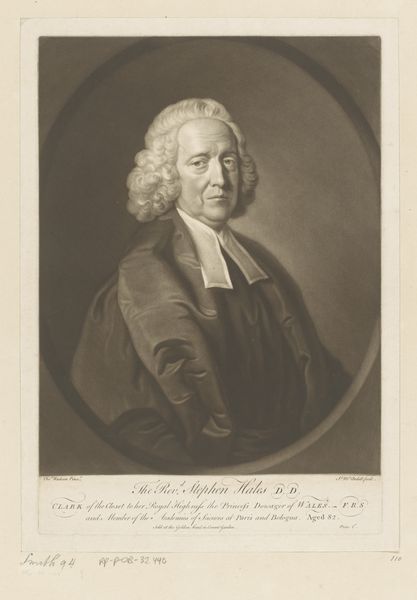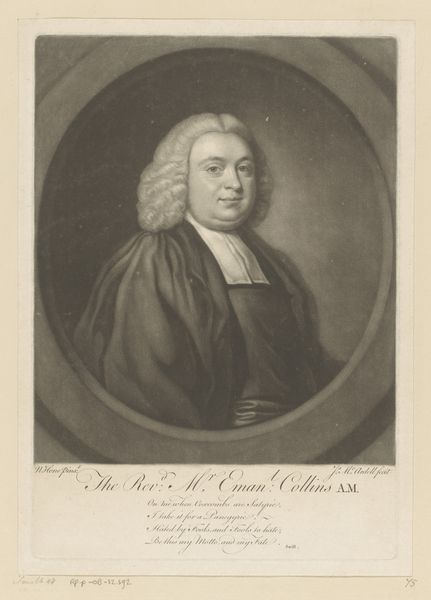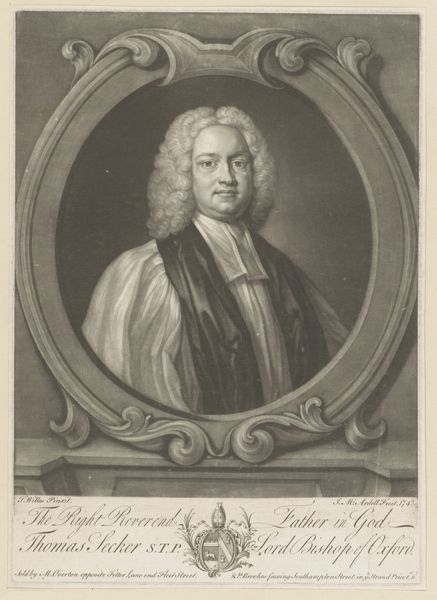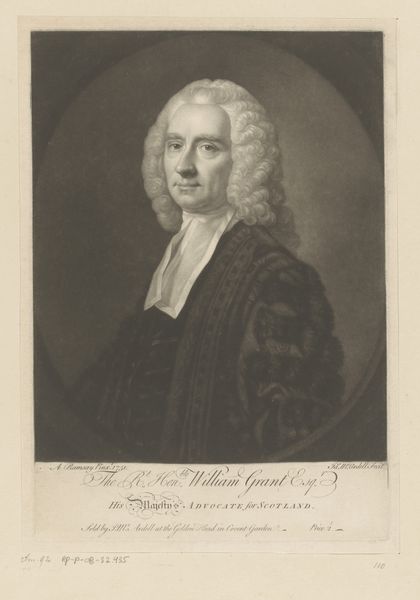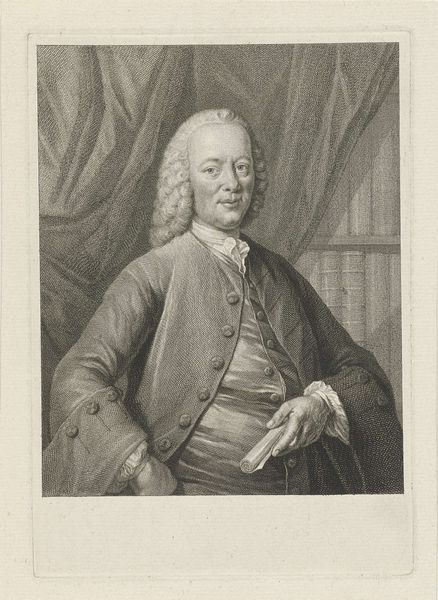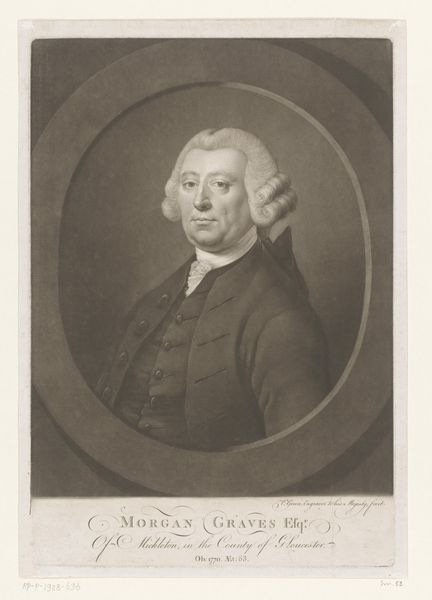
print, engraving
#
portrait
#
baroque
# print
#
historical photography
#
engraving
Dimensions: height 329 mm, width 227 mm
Copyright: Rijks Museum: Open Domain
Curator: Here we have a print titled "Portret van John Keeling," dating back to 1756, created by James McArdell. What's your initial impression? Editor: Austere. There's a reserved formality about the composition, an interesting interplay of light and shadow, contained within the figure, yet radiating from it. It makes me think about class and privilege in production practices. Curator: Indeed. McArdell, a master of the mezzotint technique, here translates the sitter's status into visual form. Observe how the texture is created, building up tonal gradations that create both a sense of volume and delicate intricacy. Editor: Yes, and that very texture speaks to the labor involved, doesn't it? Consider the man-hours etched into this copper plate, and think about the social system required to dedicate time for artisans to refine engravings, thus illustrating and upholding specific social standards of beauty, while being commissioned for representing someone such as "John Keeling Esqr". It’s embedded power! Curator: A fitting point. McArdell’s expert handling transforms simple printmaking into an exquisite simulacrum of elite presentation, with John Keeling positioned formally and the symbolic drapery cascading behind him, reinforcing the construction of the man as a symbol of the period. Editor: Those folds could have been fabric in a room where this John Keeling met all other individuals, fabric available through international exchange of textiles at the moment that reflects global structures of power that were at play through the social standards of luxury consumption. It is, on one hand, aesthetics in service of celebrating ruling classes. On the other, material culture in all its exploitative origins. Curator: A perspective I hadn’t considered, yet entirely applicable to analyzing such art of the Baroque style. I appreciate how your emphasis on the material and social aspects provides a fuller understanding. Editor: Thank you. It’s essential to acknowledge the means of production and consumption when engaging with historical objects. Curator: Absolutely. We leave this artwork with a layered appreciation, having addressed form and sociocultural relevance.
Comments
No comments
Be the first to comment and join the conversation on the ultimate creative platform.
